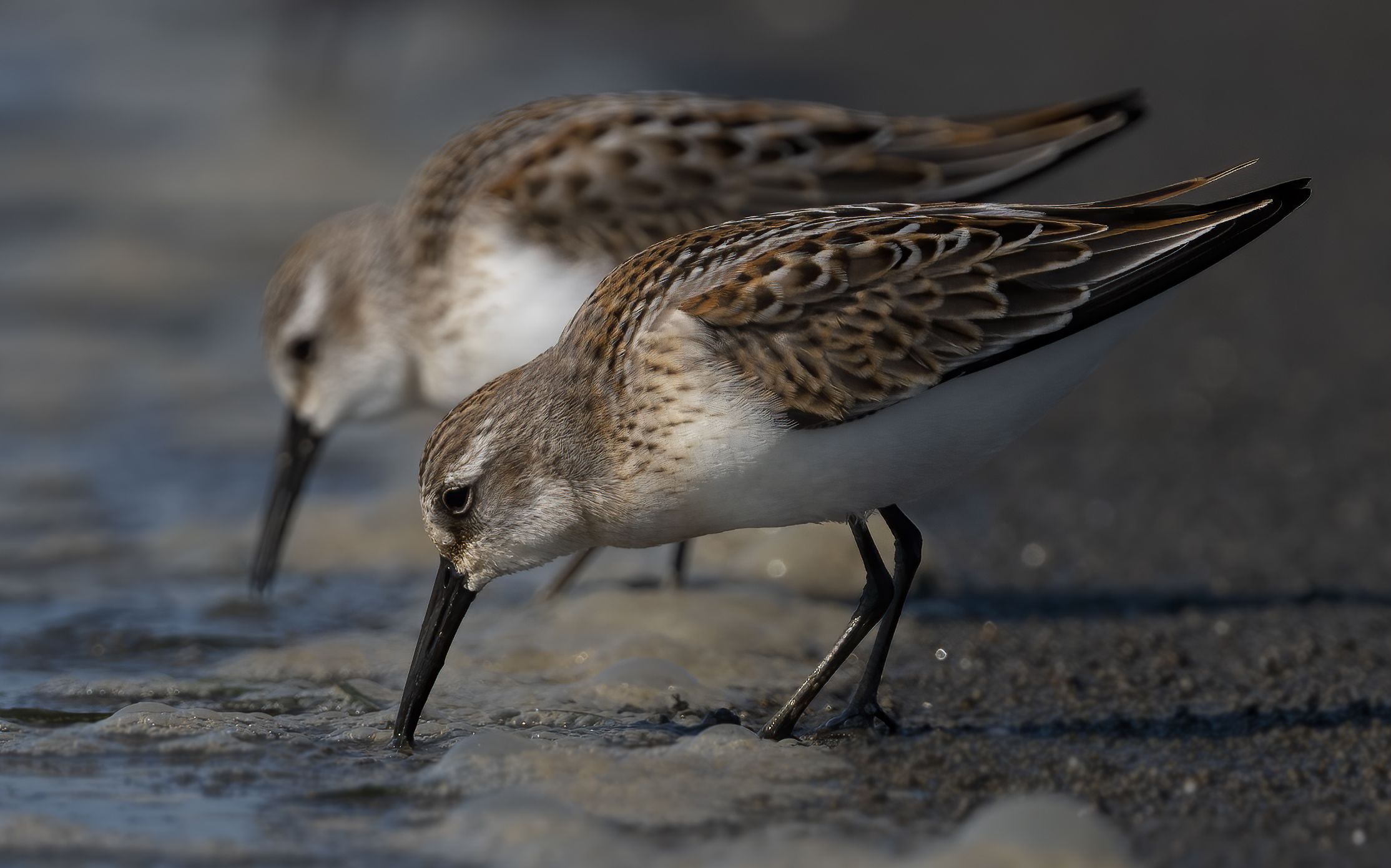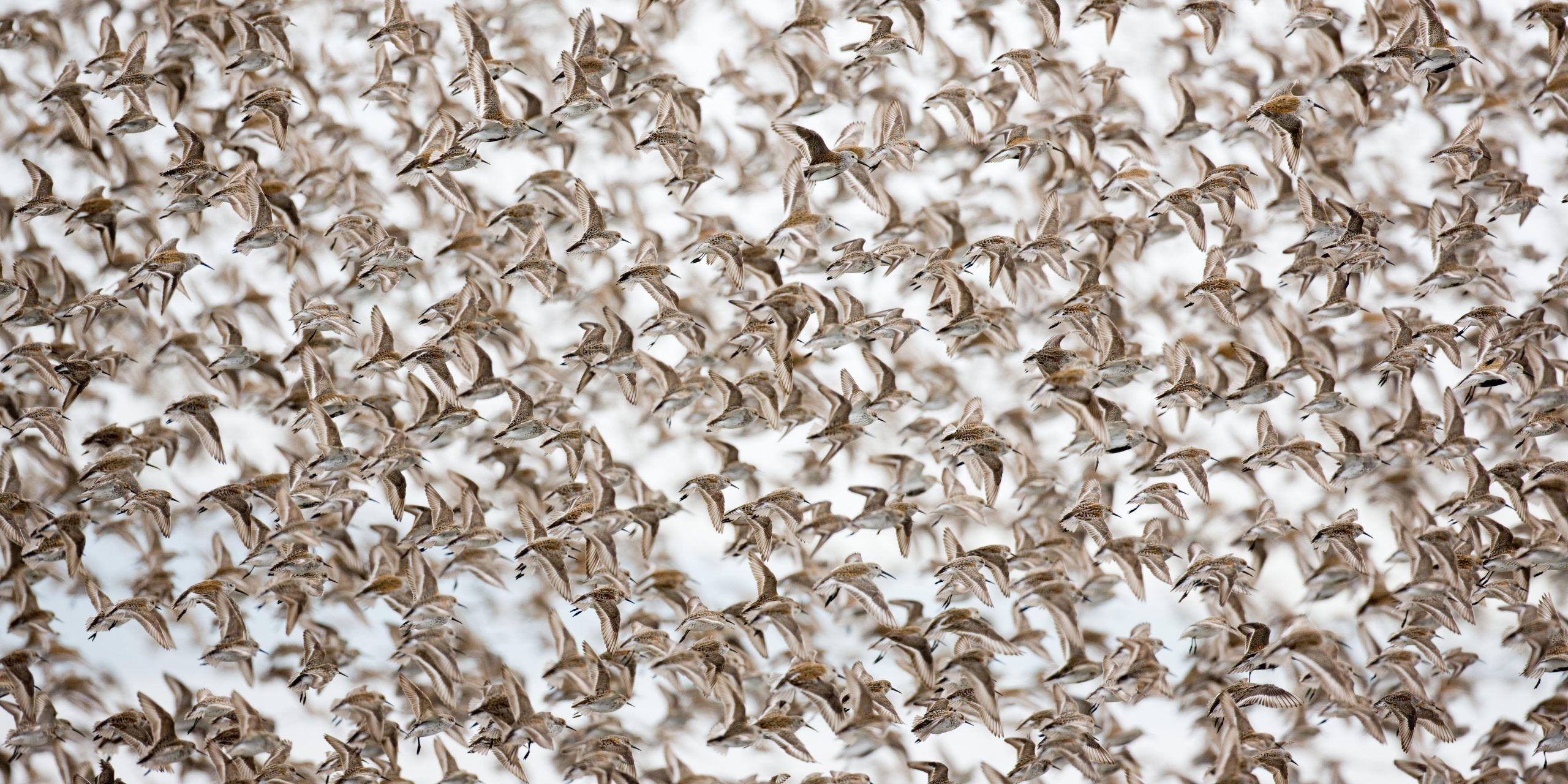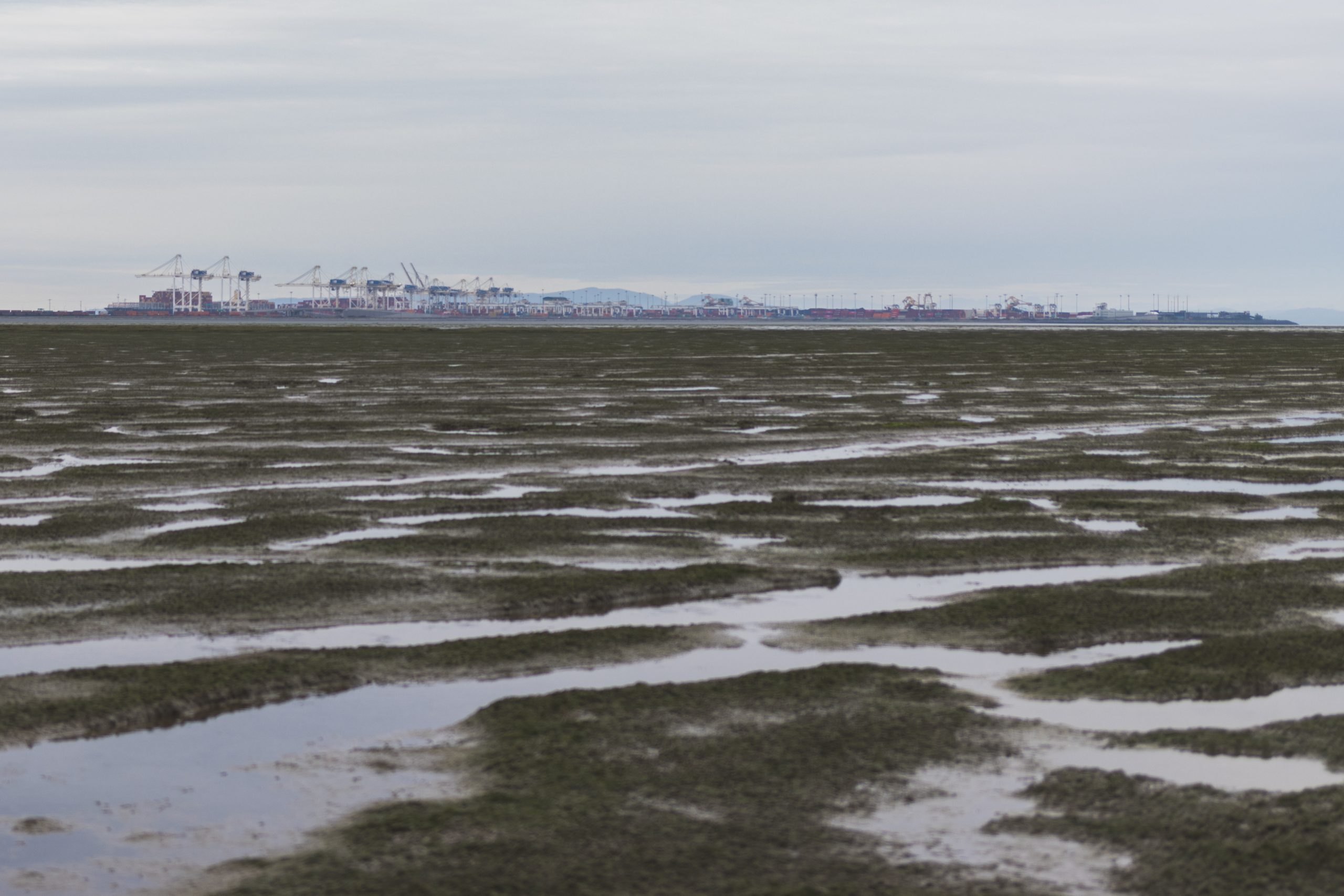by Caroline Biel
They weigh scarcely more than a slice of bread. They look dainty enough to get blown away by a gust of wind. Yet each year they migrate vast distances, jumping from country to country as if playing hopscotch across Earth.
Adult Western Sandpipers are easy to identify in summer plumage. Rufous streaks on their head and wings distinguish them from other “peeps” (little brown shorebirds). When adults lose their rusty highlights in autumn, a long, slightly drooping bill is another field mark to look for.

Western Sandpiper. Photo: Finn Grathwol
Western Sandpipers winter on the coasts of Central and South America and, come spring, migrate up the Pacific coast to breeding grounds on the Alaskan tundra. One of the best places to see Western Sandpipers is BC’s Fraser River Estuary, where they stage in the hundreds of thousands during migration. Hungry Peregrine Falcons often send large swarms of them to the skies – it’s a spectacle like no other.

Birds flock. Photo: Jason Puddifoot
Future industrial projects on key stopover sites – such as Roberts Bank Terminal 2 – could leave these birds with too few places to “refuel”, preventing them from completing their migration and putting their future at risk.

Fraser River Estuary. Photo: Kris Cu
Une version française de cet article est disponible à : oiseauxcanada.org/becasseaudalaskafr
